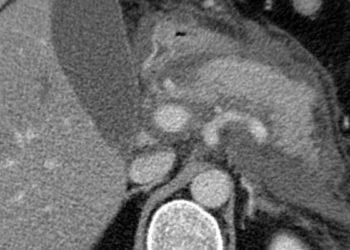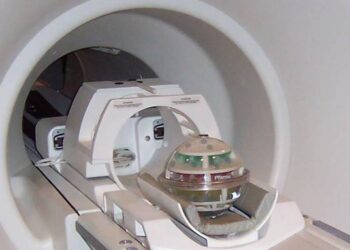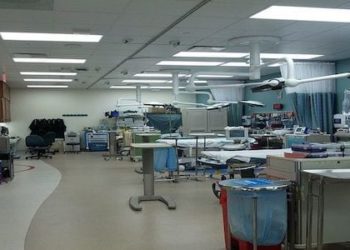2 Minute Medicine Rewind July 20 – July 27, 2014
In this section, we highlight the key high-impact studies, updates, and analyses published in medicine during the past week.
Efficacy of paracetamol for acute low-back pain: a double-blind, randomised controlled trial
Paracetamol (also known as acetaminophen) is commonly prescribed as a first-line agent for acute lower back pain, however its effectiveness has yet to be thoroughly studied for this indication. In this randomized control trial across 235 primary care centers, 1652 patients with acute lower back pain were assigned to receive either 4 weeks of regular doses of paracetamol (about 3990mg per day), as-needed doses of paracetamol (up to a maximum of 4000mg per day), or placebo. The primary outcome measured after 3 months of follow-up was time until recovery to a pain score of 0 or 1 (out of 10) that was sustained for 7 consecutive days. Researchers found that there was no difference among the different groups for time to recovery (adjusted p=0.79), with the median recovery time being 17 days in the regular group (95% CI 14-19d), 17 days in the as-needed group (95% CI 15-20d), and 16 days in the placebo group (95% CI 14-20d). The rate of adverse events recorded by each group was also similar: 18.5% in the regular group, 18.7% in the as-needed group, and 18.5% in the placebo group. These findings suggest that paracetamol, as traditionally dosed or when used as-needed, does not provide relief more than placebo in patients with acute lower back pain, but also does not appear to be significantly more dangerous.
Sofosbuvir and Ribavirin for Hepatitis C in Patients With HIV Coinfection
Treatment of HCV in patients with HIV is known to significantly reduce morbidity and mortality and has been traditionally achieved with a combination of interferon and ribavirin with or without an HCV protease inhibitor. This regimen is suboptimal as many HIV patients are ineligible to receive interferon and experience significant drug interactions between HCV and antiretroviral drugs. In this phase 3, non-randomized, uncontrolled trial, 114 HIV patients with HCV genotype 1, 68 with HCV genotype 2 or 3, and 41 treatment-experienced patients w/ HCV genotype 2 or 3, received 400mg of sofosbuvir and ribavirin for 12 weeks (treatment-naïve patients) or 24 weeks (treatment-experienced patients). Researchers found that among the treatment-naïve patients, 76% (95% CI 67-84%) of genotype 1 patients, 88% (70-98%) of genotype 2 patients, and 67% (51-80%) of genotype 3 experienced sustained virologic response (SVR, defined as serum HCV < 25 copies/mL 12 wks after cessation of therapy). Among treatment-experienced patients, 92% (73-99%) of genotype 2 and 94% (71-100%) of genotype 3 achieved SVR. The most common adverse effects included fatigue, insomnia, headache, and nausea. This study shows that an oral, interferon-free regimen of sofosbuvir and ribavirin achieved high rates of SVR across the main HCV genotypes in coinfected HIV/HCV patients.
Outpatient Glycemic Control with a Bionic Pancreas in Type 1 Diabetes
Insulin delivery coupled to continuous glucose monitoring in the form of bionic endocrine pancreatic systems have been shown to effectively regulate glucose levels in adults and adolescents with Type 1 diabetes mellitus (DM) in inpatient settings. However, their effectiveness in the outpatient setting, where there can be larger fluctuations in meals and activity levels, is unstudied. In this series of two random-order, crossover studies, 20 adults and 32 adolescents with Type 1 DM were treated with bionic pancreases for 5 days. This study found that in adults with the bionic pancreas, the mean plasma glucose was 138 mg/dl and the mean proportion of time with hypoglycemia (glucose < 70 mg/dl) was 4.8%. After 1 day of adaptation by the bionic pancreas, the mean glucose level (±SD) was 133±13 mg/dl on the bionic pancreas vs. 159±30 mg/dl in the control period (p < 0.001). The proportion of time with hypoglycemia was 6.1% vs. 7.3% (p = 0.01). In adolescents, the mean glucose level when on the bionic pancreas was 138±18 mg/dl vs. 157±27 mg/dl in the control period (p = 0.004). The proportion of time with hypoglycemia was similar (6.1% vs. 7.6% p = 0.23). However the average frequency of interventions for hypoglycemia was lower in the bionic-pancreas period (once per 1.6 days vs. once per 0.8 days, p < 0.001). This study therefore showed that a bionic pancreas with continuous glucose monitoring was able to achieve improved mean glycemic levels and fewer hypoglycemic episodes requiring intervention in both adults and adolescents with Type 1 DM.
The Millennium Development Goals have focused specific attention with regards to achievements in reducing the global burden of HIV, tuberculosis (TB), and malaria. In this analysis of the Global Burden of Disease 2013 study, researchers used a diverse set of methods to extrapolate statistics to better contextualize progress that has been made with regards to these three diseases from early 2000s to 2013. This study reports that in 2013, HIV incidence was 1.8 million (95% CI 1.7 – 2.1 million), prevalence was 29.2 million (28.1-31.7), and number of deaths due to HIV was 1.3 million (1.3 – 1.5). This is compared to the peak of the HIV epidemic in 2005, when HIV deaths were 1.7 million (1.6 – 1.7). It is estimated that from 2000 to 2011, through antiretroviral therapy and prevention of mother-to-child transmission, 19.1 million life-years were saved (16.6-21.5), which translated to about $4498 per life year in developing countries when factoring in total expenditures on HIV development assistance. In 2013, the TB incidence was 7.1 million (6.9 – 7.3), prevalence was 11.2 million (10.8-11.6), and number of deaths was 1.3 million (1.2 – 1.4). Since 2000, TB incidence, prevalence, and deaths have decreased every year. Worldwide, there were 232 million cases (143 – 387) in 2003 and 1.2 million deaths (1.1 – 1.4) in 2004. After 2004, child mortality from malaria in sub-Saharan Africa has fallen by 31.5% (15.7 – 44.1). Malaria mortality outside of Africa has also continued to decrease steadily since 1990. This study concludes that the prevalence and mortality rates of HIV, TB, and malaria have all decreased since 2000, showing encouraging signs as to the effectiveness of global action in fighting the effects of these diseases.
Inhibition of the mTORC Pathway in the Antiphospholipid Syndrome
Chronic vascular lesions are a common feature of patients with antiphospholipid syndrome and often occur in patients requiring transplantation. There are currently few treatments for this vasculopathy, and the molecular mechanisms underlying this process remain unknown. In this article, researchers further interrogated these pathways through several different methods: examining immunostaining patterns in patients with antiphospholipid syndrome nephropathy to evaluate pathway activation in the mammalian target of rapamycin complex (mTORC), evaluating pathology specimens from patients who had died from antiphospholipid syndrome, in vitro testing of the modulation of the mTORC pathway with antiphospholipid antibodies, and analyzing the effect of sirolimus in kidney transplant patients with antiphospholipid syndrome. Researchers found that patients with antiphospholipid syndrome and proliferating intrarenal vessels also had activation of the mTORC pathway. Patients who had died from catastrophic antiphospholipid syndrome demonstrated activation of mTORC in their vessels. IgG antibodies from antiphospholipid syndrome patients successfully stimulated mTORC. Sirolimus, an mTORC inhibitor, was also shown to decrease vascular proliferation and vascular lesion recurrence in renal transplant patients with antiphospholipid syndrome nephropathy. These results, when considered together, strongly suggest that the vascular lesions in antiphospholipid syndrome are mediated through the mTORC pathway.
Image: PD
©2012-2014 2minutemedicine.com. All rights reserved. No works may be reproduced without written consent from 2minutemedicine.com. Disclaimer: We present factual information directly from peer reviewed medical journals. No post should be construed as medical advice and is not intended as such by the authors or by 2minutemedicine.com. PLEASE SEE A HEALTHCARE PROVIDER IN YOUR AREA IF YOU SEEK MEDICAL ADVICE OF ANY SORT.









